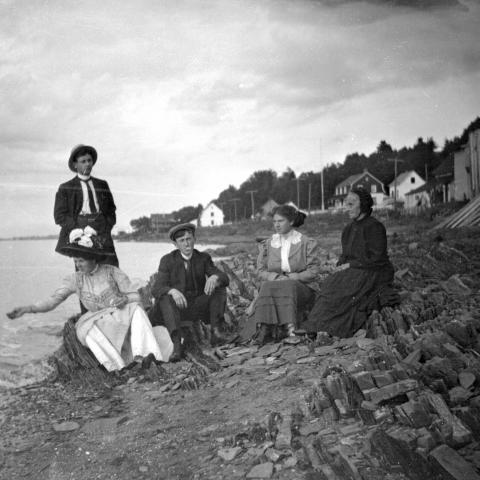In planning their holidays, tourists and summer residents all had the same wish: to get away from the daily routine of their city lives. Summer people became experts in pushing bothersome daily cares aside to travel far from home, renew with nature and spend pleasant times with friends and family. They relaxed on the beach, read books and magazines, gardened and golfed. Some of the more rigid social conventions were dropped, but above all, life went at a slower pace.
This “art of the vacation” can only be had with a good amount of free time and money. The middle class that emerged in the 20th century gradually came to experience a new reality: real summer vacations! A few French-speaking businessmen from eastern Quebec had already acquired a taste for recreational hunting and fishing at the end of the 19th century. In the early 20th century, they took family road trips to local watering places and built modest cottages on the St. Lawrence, or on a nearby river or lake.
For the middle class, it was only after World War II that owning a cottage became widespread. This kind of summer home served as a villa—just on a smaller scale, of course! They were places where families gathered, found freedom and made precious memories. While passing tourists did not share a sense of being rooted in the region, they still enjoyed—if only for a few days—the good life of eastern Quebec.
Today, as work occupies a huge part of our daily lives, this bygone art de vivre is the stuff of daydreams. There is an impressive choice of magazines on tourism, cottage life and cocooning! Nonetheless most people wonder if they can afford the time to care for themselves, their families and their friends. Might this be a modern-day privilege of the wealthy?








